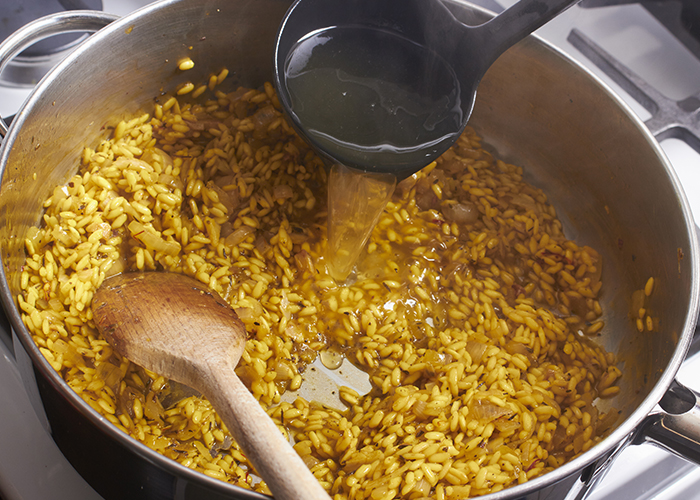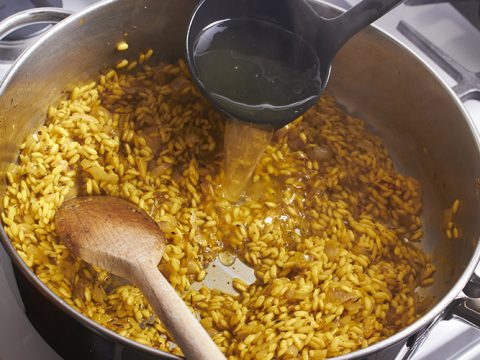How to Make the Perfect Risotto: Essential Steps and Rules to Follow
Risotto may not be the first dish that comes to mind when you think of Italian food, but it’s a worldwide favorite. Despite its popularity—especially in fine-dining menus—risotto has a reputation for being difficult, mastering perfection only in the hands of expert chefs. We disagree.
All you need for an amazing result are a few key ingredients, an authentic recipe, some patience, and a dash of attention. And maybe a bit of Eros Ramazzotti playing in the background—sometimes music works wonders even in a risotto pot.
What Is Risotto?
First, let’s clarify what risotto is not: it’s not pilaf. The differences run from ingredients and rice variety to cooking method and the final creamy texture. Risotto originates in northern Italy—where rice cultivation thrives—and is celebrated for its rich, creamy consistency. The classic recipe calls for just rice, onion, broth, butter, Parmesan, and patience.
From there, you can personalize with almost any addition: seafood, vegetables, mushrooms, squash, asparagus, or meats. Some chefs even view risotto as a cooking technique rather than a single dish, due to its endless variations.
Best Rice Varieties for Risotto
Choose high‐starch, short‐grain Italian rice labeled for risotto. The top three are:
- Carnaroli: “King of risotto rice” for its high starch and outstanding creaminess.
- Arborio: Widely available and rich in starch for a smooth result.
- Vialone Nano: Slightly less sticky but still a gourmet choice, prized in Verona.
Choosing the Right Pot
Use a wide‐bottomed pan or Dutch oven with thick walls for even heat distribution and easy stirring. A light‐colored interior helps you monitor the rice’s texture and color. Serve directly from the pot for best results.
Core Ingredients
- Risotto rice (Carnaroli, Arborio, or Vialone Nano)
- Hot chicken or vegetable broth
- Dry white wine (optional)
- Onion, finely chopped
- Extra-virgin olive oil
- Unsalted butter
- Freshly grated Parmesan
Five Common Mistakes to Avoid
- Under-stirring: Stir every 20–30 seconds to release starch and prevent sticking.
- Wrong rice: Never use long-grain varieties like basmati or jasmine.
- Washing rice: Rinsing strips away the starch that makes risotto creamy.
- Adding cold broth: Always keep your broth hot so cooking temperature stays steady.
- Pouring all liquid at once: Gradual addition is key to the signature texture.
Step-by-Step Method
- Warm the broth: Keep it simmering so each ladle added maintains cooking temperature.
- Sauté the onion: In olive oil and a bit of butter over medium heat until translucent (about 4 minutes).
- Toast the rice: Add the rice and stir for 2 minutes until each grain is coated and slightly toasted.
- Deglaze with wine: Pour in white wine (if using), let it evaporate fully, leaving behind its aroma.
- Add broth gradually: Ladle in 100–200 ml at a time, stirring until almost absorbed before the next addition.
- Check doneness: After 10–12 minutes, taste the rice. Continue adding broth until grains are al dente and the texture is creamy.
- Finish with butter and Parmesan: Remove from heat, stir in a knob of butter and generous Parmesan for extra creaminess and flavor.
Now hurry to the kitchen—talking about risotto without cooking it immediately is simply inhuman! Buon appetito!


